Name USS Camden Awarded 25 April 1963 Laid down 17 February 1964 Construction started 17 February 1964 Length 243 m | Cost Approx. $458 million Acquired 11 March 1967 Launched 29 May 1965 | |
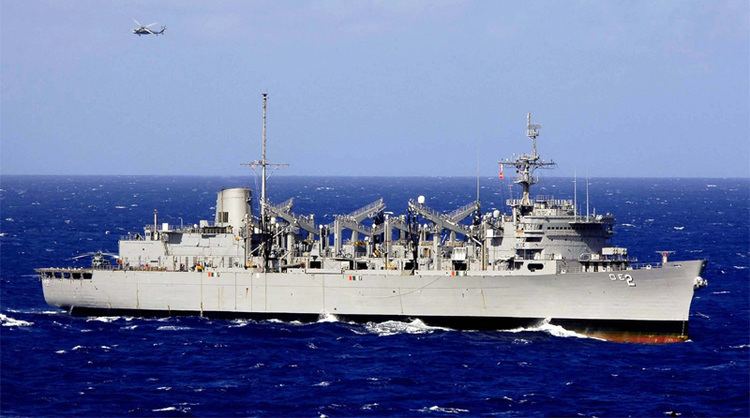 | ||
Builder New York Shipbuilding Corporation | ||
The USS Camden (AOE-2) is the second ship of the United States Navy named after the city of Camden, New Jersey that lies on the Delaware River across from Philadelphia, Pennsylvania. It was a Sacramento-class fast combat support ship, combining the functions of three logistic support ships in one hull - fleet oiler (AO), ammunition ship (AE), and refrigerated stores ship (AF).
Contents
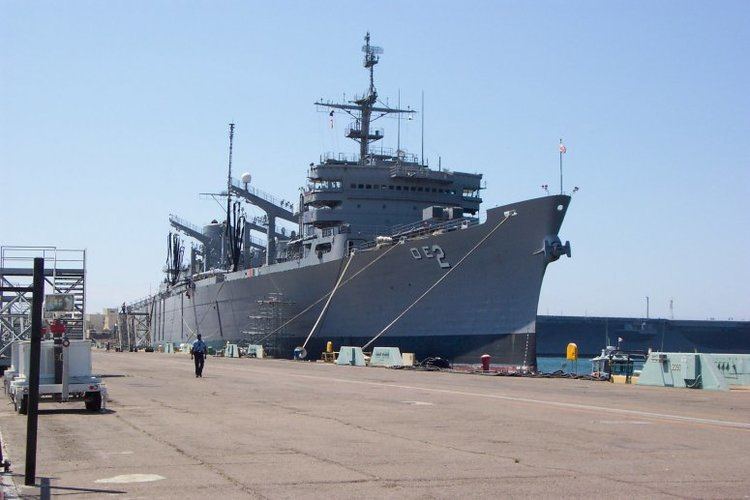
History

Camden was commissioned 1 April 1967 as the second of four vessels in its class. It was also the 542nd and final contract in the 68-year history of New York Shipbuilding, and the last vessel completed and launched at the shipyard. It was assigned to the Pacific Fleet in September 1967 and was initially homeported in Long Beach, California. For their accomplishments during her first deployment to WestPac in 1968-1969, her crew was awarded the Meritorious Unit Commendation.
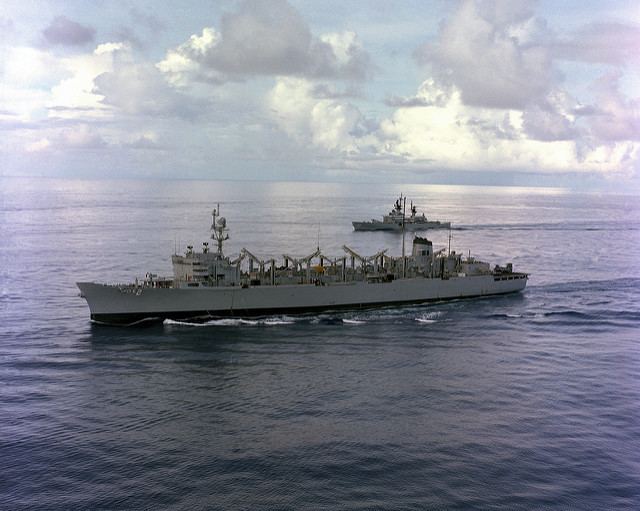
In August 1974, Camden moved to its new homeport of Bremerton, Washington. The ship operated extensively up and down the West Coast of the United States and deployed frequently to the Western Pacific and Indian Oceans to support units of the Seventh Fleet.
In 1980, Camden moved again to the homeport of Bremerton, Washington for an overhaul.
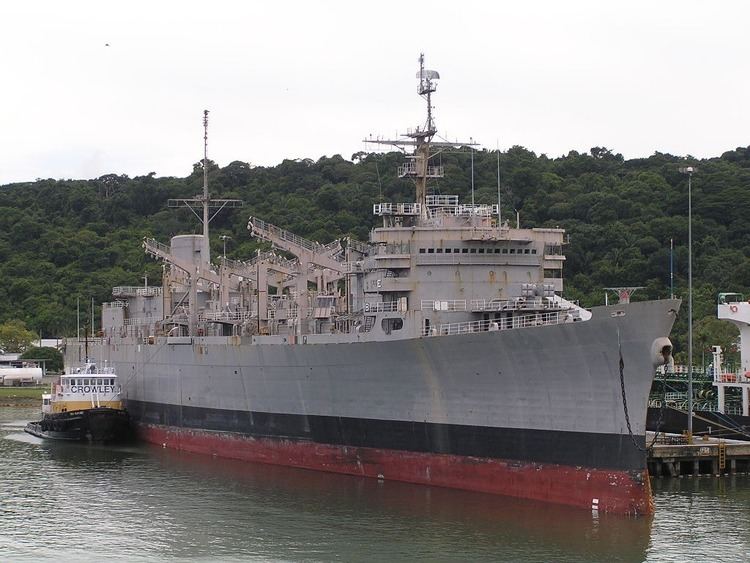
On 20 July 1983 The New York Times reported that the Camden along with seven other vessels in the Carrier Ranger Battle Group left San Diego on Friday 15 July 1983 and were headed for the western Pacific when they were rerouted and ordered to steam for Central America to conduct training and flight operations in areas off the coasts of Nicaragua, El Salvador and Honduras as part of major military exercises planned for that summer.
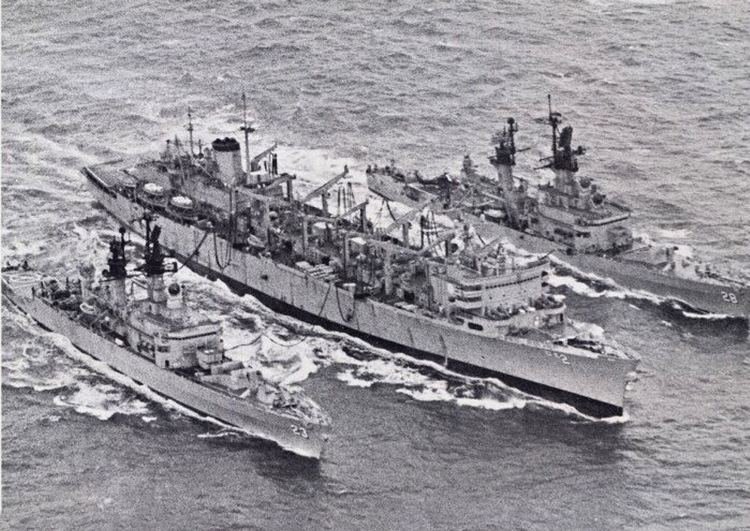
The battle group comprised the carrier Ranger, the cruiser Horne, the guided missile destroyer Lynde McCormick, the destroyers Fletcher and Fife, the frigate Marvin Shields, the oiler Wichita and the support ship Camden.

On 17 May 1987 USS Camden was redirected to assist the USS Stark after it was attacked by unfriendly fire. USS Camden's job was to unload all of the weapons on board the Stark in case of further attack.
On 15 August 1991 Four airmen from Helicopter Combat Support Squadron 11 (HC-11 "Gunbearers") are missing and presumed dead after their helicopter crashed while resupplying ships in the Pacific Ocean near Wake Island, the Navy announced. The crewmen of the ill-fated CH-46 Sea Knight were identified as Lt. Eric W. Allison, 26, of Coronado; Lt. (j.g.) Kenneth D. Pickens, 24, of Clairemont; Airman William A. Jackson, 20, of San Diego, and Petty Officer 1st Class Johnny L. Caulder Jr., 28, of Spring Valley. The Sea Knight, operating from the fast combat support ship Camden, crashed Wednesday; search efforts were abandoned about 24 hours later, said Lt. Ken Ross, a spokesman for the U.S. Pacific Fleet. The cause of the accident, which occurred about 100 miles east of Wake Island, is under investigation, Ross said. Investigators will look at recorded radio transmissions from the helicopter and interview ship crewmen who witnessed the crash. Two ships were close by when the aircraft dropped into the water, he said. Two helicopters were immediately launched for an air search, and the ships in the area launched whaleboats to assist in the search. The missing airmen were members of Helicopter Combat Support Squadron 11 at North Island Naval Air Station, said Fred Wilson, a spokesman for the air station. The Camden was deployed to resupply the aircraft carrier Nimitz and its support ships, which were returning to the U.S. from duty in the Persian Gulf. The carrier battle group reached the gulf region after Operation Desert Storm. Source: http://articles.latimes.com/1991-08-17/local/me-402_1_sea-knight
In March 1996, Camden was awarded its third consecutive Battle "E" for demonstrating excellence in all warfare and mission categories.
In 2004, Camden won the Battle "E" again. This was the final year of Battle "E" eligibility for the Sacramento-class fast combat support ship.
In January 2005, Camden left on its final deployment, an eight-month world tour with the USS Carl Vinson escorting that carrier to its new homeport in Norfolk, Virginia. Camden was decommissioned 14 October 2005 at Naval Base Kitsap, Bremerton, Washington, and was disposed of by scrapping at Esco Marine, in Brownsville, Texas.
Power plant
Camden's power plant was one of two built for the Iowa-class battleship USS Kentucky, which was cancelled in 1947 when 72.1 percent complete. The other Kentucky power plant was used to power USS Sacramento, the lead ship of her class.
